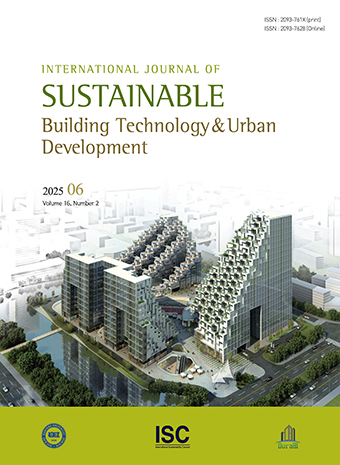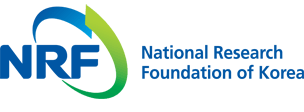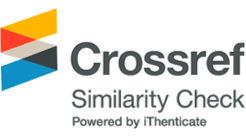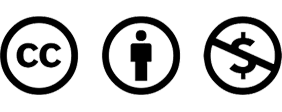General Article
A. Agarwal, A. Kumar, P. Gupta, R. Tomar, and N.B. Singh, Cu (II) ions removal from water by charcoal obtained from marigold flower waste. Materials Today: Proceedings. 34 (2021), pp. 875-879.
10.1016/j.matpr.2020.11.046V.K. Gupta, A. Mittal, R. Jain, M. Mathur, and S. Sikarwar, Adsorption of Safranin-T from wastewater using waste materials-activated carbon and activated rice husks. Journal of Colloid and Interface Science. 303(1) (2006), pp. 80-86.
10.1016/j.jcis.2006.07.03616934282S.T. Nipa, N.R. Shefa, S. Parvin, M.A. Khatun, M.J. Alam, S. Chowdhury, M.A.R. Khan, S.M.A.Z. Shawon, B.K. Biswas, and M.W. Rahman, Adsorption of methylene blue on papaya bark fiber: Equilibrium, isotherm and kinetic perspectives. Results in Engineering. 17 (2023), 100857.
10.1016/j.rineng.2022.100857N.M. Mahmoodi, B. Hayati, M. Arami, and C. Lan, Adsorption of textile dyes on pine cone from colored wastewater: Kinetic, equilibrium and thermodynamic studies. Desalination. 268(1-3) (2011), pp. 117-125.
10.1016/j.desal.2010.10.007A. Hamzezadeh, Y. Rashtbari, S. Afshin, M. Morovati, and M. Vosoughi, Application of low-cost material for adsorption of dye from aqueous solution. International Journal of Environmental Analytical Chemistry. 102(1) (2022), pp. 254-269.
10.1080/03067319.2020.1720011M. Kadhom, N. Albayati, H. Alalwan, and M. Al-Furaiji, Removal of dyes by agricultural waste. Sustainable Chemistry and Pharmacy. 16 (2020), 100259.
10.1016/j.scp.2020.100259M.A.M. Razi, M.N.A.M. Hishammudin, and R. Hamdan, Factor affecting textile dye removal using adsorbent from activated carbon: A review. in MATEC Web of Conferences. 103 (2017), 06015.
10.1051/matecconf/201710306015J. Fito, M. Abewaa, A. Mengistu, K. Angassa, A.D. Ambaye, W. Moyo, and T. Nkanbule, Adsorption of methylene blue from textile industrial wastewater using activated carbon developed from Rumex abyssinicus plant. Scientific Reports. 13(1) (2023), 5427.
10.1038/s41598-023-32341-w37012298PMC10070411A.N. Fernandes, C.A.P. Almeida, C.T.B. Menezes, N.A. Debacher, and M.M.D. Sierra, Removal of methylene blue from aqueous solution by peat. Journal of Hazardous Materials. 144(1-2) (2007), pp. 412-419.
10.1016/j.jhazmat.2006.10.05317125920C. Waghmare, S. Ghodmare, K. Ansari, M.H. Dehghani, M.A. Khan, M.A. Hasan, S. Islam, N.A. Khan, and S. Zahmatkesh, Experimental investigation of H3PO4 activated papaya peels for methylene blue dye removal from aqueous solution: Evaluation on optimization, kinetics, isotherm, thermodynamics, and reusability studies. Journal of Environmental Management. 345 (2023), 118815.
10.1016/j.jenvman.2023.11881537633104C. Qin, Y. Chen, and J.M. Gao, Manufacture and characterization of activated carbon from marigold straw (Tagetes erecta L) by H3PO4 chemical activation. Materials Letters. 135 (2014), pp. 123-126.
10.1016/j.matlet.2014.07.151A.M. Echavarria-Alvarez and A. Hormaza-Anaguano, Flower wastes as a low-cost adsorbent for the removal of acid blue 9. Dyna. 81(185) (2014), pp. 132-138.
10.15446/dyna.v81n185.37234G. Elango and R. Govindasamy, Removal of colour from textile dyeing effluent using temple waste flowers as ecofriendly adsorbent. IOSR Journal of Applied Chemistry. 11(6) (2018), pp. 19-28.
M.A. Tony, Low-cost adsorbents for environmental pollution control: A concise systematic review from the perspective of principles, mechanism and their applications. Journal of Dispersion Science and Technology. 43(11) (2022), pp. 1612-1633.
10.1080/01932691.2021.1878037L. Bulgariu, L.B. Escudero, O.S. Bello, M. Iqbal, J. Nisar, K.A. Adegoke, F. Alakhras, M. Kornaros, and I. Anastopoulos, The utilization of leaf-based adsorbents for dyes removal: A review. Journal of Molecular Liquids. 276 (2019), pp. 728-747.
10.1016/j.molliq.2018.12.001M.S. Waghmode, A.B. Gunjal, N.N. Nawani, and N.N. Patil, Management of floral waste by conversion to value-added products and their other applications. Waste and Biomass Valorization. 9 (2018), pp. 33-43.
10.1007/s12649-016-9763-2N. Chaiammart, S. Wongcharoen, A. Eiad-Ua, T. Ishizaki, and G. Panomsuwan, Transformation of waste marigold flowers into porous carbons via hydrothermal carbonization. Key Engineering Materials. 824 (2019), pp. 23-29.
10.4028/www.scientific.net/KEM.824.23J. Yadav and O. Sahu, Dye removal of cationic dye from aqueous solution through acid functionalized ceramic. Total Environment Research Themes. 6 (2023), 100038.
10.1016/j.totert.2023.100038C. Waghmare, S. Ghodmare, K. Ansari, F.M. Alfaisal, S. Alam, M.A. Khan, and Y. Ezaier, Adsorption of methylene blue dye onto phosphoric acid-treated pomegranate peel adsorbent: Kinetic and thermodynamic studies. Desalination and Water Treatment. (2024), 100406.
10.1016/j.dwt.2024.100406G. Mosoarca, C. Vancea, S. Popa, M. Gheju, and S. Boran, Syringa vulgaris leaves powder a novel low-cost adsorbent for methylene blue removal: Isotherms, kinetics, thermodynamic and optimization by Taguchi method. Scientific Reports. 10(1) (2020), 17676.
10.1038/s41598-020-74819-x33077788PMC7810873M. Abbas, Z. Harrache, T. Aksil, and M. Trari, Removal of indigo carmine (IC) in aqueous solution onto activated pomegranate peel (APP) by adsorption process: Kinetic and thermodynamic studies. Journal of Engineered Fibers and Fabrics. 17 (2022), 15589250211018195.
10.1177/15589250211018195E.I. Unuabonah, G.U. Adie, L.O. Onah, and O.G. Adeyemi, Multistage optimization of the adsorption of methylene blue dye onto defatted Carica papaya seeds. Chemical Engineering Journal. 155(3) (2009), pp. 567-579.
10.1016/j.cej.2009.07.012A.P. Rawat, V. Kumar, and D.P. Singh, A combined effect of adsorption and reduction potential of biochar derived from Mentha plant waste on removal of methylene blue dye from aqueous solution. Separation Science and Technology. 55(5) (2020), pp. 907-921.
10.1080/01496395.2019.1580732S. Bansal, P.K. Pandey, and S. Upadhayay, Methylene blue dye removal from wastewater using Ailanthus excelsa Roxb as adsorbent. Water Conservation Science and Engineering. 6 (2021), pp. 1-9.
10.1007/s41101-020-00097-3R. Ansari and Z. Mosayebzadeh, Removal of basic dye methylene blue from aqueous solutions using sawdust and sawdust coated with polypyrrole. Journal of the Iranian Chemical Society. 7 (2010), pp. 339-350.
10.1007/BF03246019A. Gupta, S.K. Gupta, M. Rashid, A. Khan, and M. Manjul, Unmanned aerial vehicles integrated HetNet for smart dense urban area. Transactions on Emerging Telecommunications Technologies. 33(10) (2020), pp. 1-22.
10.1002/ett.4123S. Rangabhashiyam, S. Lata, and P. Balasubramanian, Biosorption characteristics of methylene blue and malachite green from simulated wastewater onto Carica papaya wood biosorbent. Surfaces and Interfaces. 10 (2018), pp. 197-215.
10.1016/j.surfin.2017.09.011A. Khan, S. Gupta, and S.K. Gupta, Multi-UAV Integrated HetNet for Maximum Coverage in Disaster Management. Journal of Electrical Engineering. 73(2) (2022), pp. 116-123.
10.2478/jee-2022-0015A.S. Abdulhameed, R.H. Al Omari, M. Abualhaija, and S. Algburi, Chitosan polymer/functionalised rambutan peel using carboxylic acid: process optimization using Box-Behnken Design for brilliant green dye removal. International Journal of Environmental Analytical Chemistry. (2024), pp. 1-21.
10.1080/03067319.2024.2392638A. Gupta and S.K. Gupta, Unmanned aerial vehicles in collaboration with Fog computing network for improving QoS. International Journal of Communication Systems. 37(9) (2024), pp. 1-19. DOI: https://doi.org/10.1002/dac.5759.
10.1002/dac.5759K.A. Mohammed, S.F. Al-alawachi, A.A. Hassan, A.H. Alkhayatt, M.M. Abood, M.A. Alkhafaji, R.S. Zabibah, S. Algburi, and S. Sharma, The Impact of Polymer Matrix Type On the Optical Properties of Silver Nanocomposites. InE3S web of conferences 2024. EDP Sciences. 505 (2024), 01017.
10.1051/e3sconf/202450501017A. Mishra and S.K. Gupta, Intelligent Classification of Coal Seams Using Spontaneous Combustion Susceptibility in IoT Paradigm. International Journal of Coal Preparation and Utilization. (2023), pp. 1-23.
10.1080/19392699.2023.2217747A.N. Saleh, A.A. Attar, S. Algburi, and O.K. Ahmed, Comparative study of the effect of silica nanoparticles and polystyrene on the properties of concrete. Results in Materials. (2023), 10040.
10.1016/j.rinma.2023.100405R. Kim, S. Tae, and H. Lim, Greenhouse gas emission analysis for each material composition of a cement reactive siloxane polymer-based penetration resist agent. International Journal of Sustainable Building Technology and Urban Development. 10(3) (2019), pp. 167-175. DOI: 10.22712/susb.20190017.
L. Sadoudi, R. Mitiche-Kettab, and S.B. Djaffar, Evaluation of the workability, marshall parameters, and the stiffness modulus of rubber modified bituminous concrete. International Journal of Sustainable Building Technology and Urban Development. 10(2) (2019), 43-55, 2019. DOI: 10.22712/susb.20190006.
- Publisher :Sustainable Building Research Center (ERC) Innovative Durable Building and Infrastructure Research Center
- Publisher(Ko) :건설구조물 내구성혁신 연구센터
- Journal Title :International Journal of Sustainable Building Technology and Urban Development
- Volume : 16
- No :1
- Pages :46-57
- Received Date : 2024-12-30
- Accepted Date : 2025-03-02
- DOI :https://doi.org/10.22712/susb.20250004




 International Journal of Sustainable Building Technology and Urban Development
International Journal of Sustainable Building Technology and Urban Development










